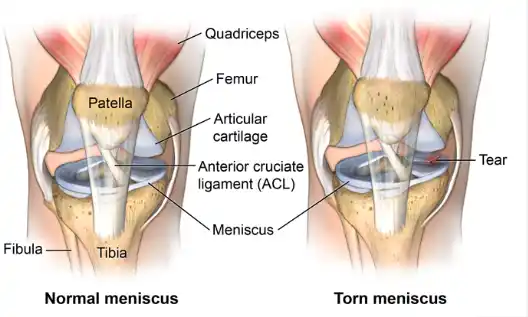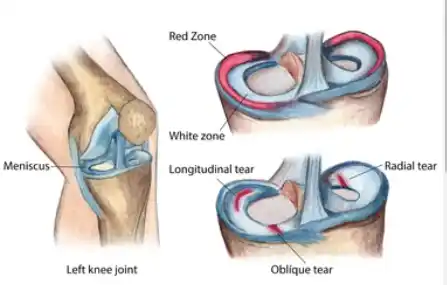 If you’ve recently been diagnosed with a meniscus tear or think that you may have one, you may be feeling overwhelmed by the treatment options and unsure about the best course of action for your recovery. Meniscus tears are one of the most common knee injuries, and can be caused by a variety of factors, including aging, overuse, or traumatic events like a sports injury. Fortunately, there are a variety of treatment options available to help you heal and get back to your normal activities with and without surgery.
If you’ve recently been diagnosed with a meniscus tear or think that you may have one, you may be feeling overwhelmed by the treatment options and unsure about the best course of action for your recovery. Meniscus tears are one of the most common knee injuries, and can be caused by a variety of factors, including aging, overuse, or traumatic events like a sports injury. Fortunately, there are a variety of treatment options available to help you heal and get back to your normal activities with and without surgery.
If you think you have a meniscus tear, you may be experiencing swelling or tightness in the knee. It may feel like you have a hard time fully locking the knee out. Your knee may be painfully popping, clicking, or locking on you. This pain may make your knee feel unstable or give out on you. Pain is often worse with deep bending or squatting and with pivoting or turning on a planted foot. The joint line may be tender medial or lateral. The back of the knee may feel tight with the swelling.

The first step in treating a meniscus tear is to get a proper diagnosis from your physician. This usually involves an exam and imaging tests to identify the severity of the tear and the location of the injury. Your doctor will also review your medical history and determine if the tear is related to an underlying condition or an isolated incident. Your physician may also ask you to perform a few simple tests to determine how much your knee is affected. Tests of motion, including manual stress of the knee, may help to diagnose the tear. At P.O.W. we can use ultrasound in the office to look for an effusion (fluid in the knee) and examine the meniscus, tendons, and ligaments. X-rays will be performed in the office to look at the alignment and shadow of the meniscus. An MRI may be ordered to look more closely at the anatomy of the tear and surrounding structural conditions of the cartilage, ligaments, and tendons.
Once the diagnosis is made, your doctor will discuss the best treatment option for your injury. Non-surgical treatments such as rest, ice, medications, injections, and physical therapy can often be used to reduce pain and swelling and improve range of motion. If your tear is more severe, you may need to undergo surgery. In certain conditions, like degenerative tears and smaller tears, a Platelet-rich plasma (PRP) injection can be considered. During surgery, the torn meniscus can be trimmed or repaired, depending on the type of injury and the location of the tear. PRP is also used at the time of surgery to limit swelling, pain, and inflammation.

What is knee arthroscopy?
Knee arthroscopy is a minimally invasive surgical procedure used to diagnose and treat knee injuries. During the procedure, a thin, lighted tube (arthroscope) is inserted into the knee joint through a small incision. The arthroscope is attached to a camera, which allows the surgeon to view the inside of the joint. The surgeon can then make any necessary repairs, such as trimming or repairing a damaged meniscus.
Knee arthroscopy is an effective way to diagnose and treat a variety of knee injuries, including meniscus tears. It offers many benefits, such as reduced pain, fewer complications, and a shorter recovery time.
If you’ve been diagnosed with a meniscus tear, it’s important to discuss your treatment options with your physician. Depending on the severity of your injury, you may be able to treat your meniscus tear with non-surgical treatments or you may need to undergo knee arthroscopy. Whatever treatment option you choose, it’s important to follow your doctor’s instructions to ensure the best possible outcome for your recovery.
The recovery process always involves use of physical therapy and modalities. With partial meniscal removals or debridements (partial meniscectomy) you will start walking and doing physical therapy almost immediately after surgery. It is important to begin range of motion and quadriceps strengthening as early as allowed after surgery. All surgeries are different, so follow your physicians instructions.
